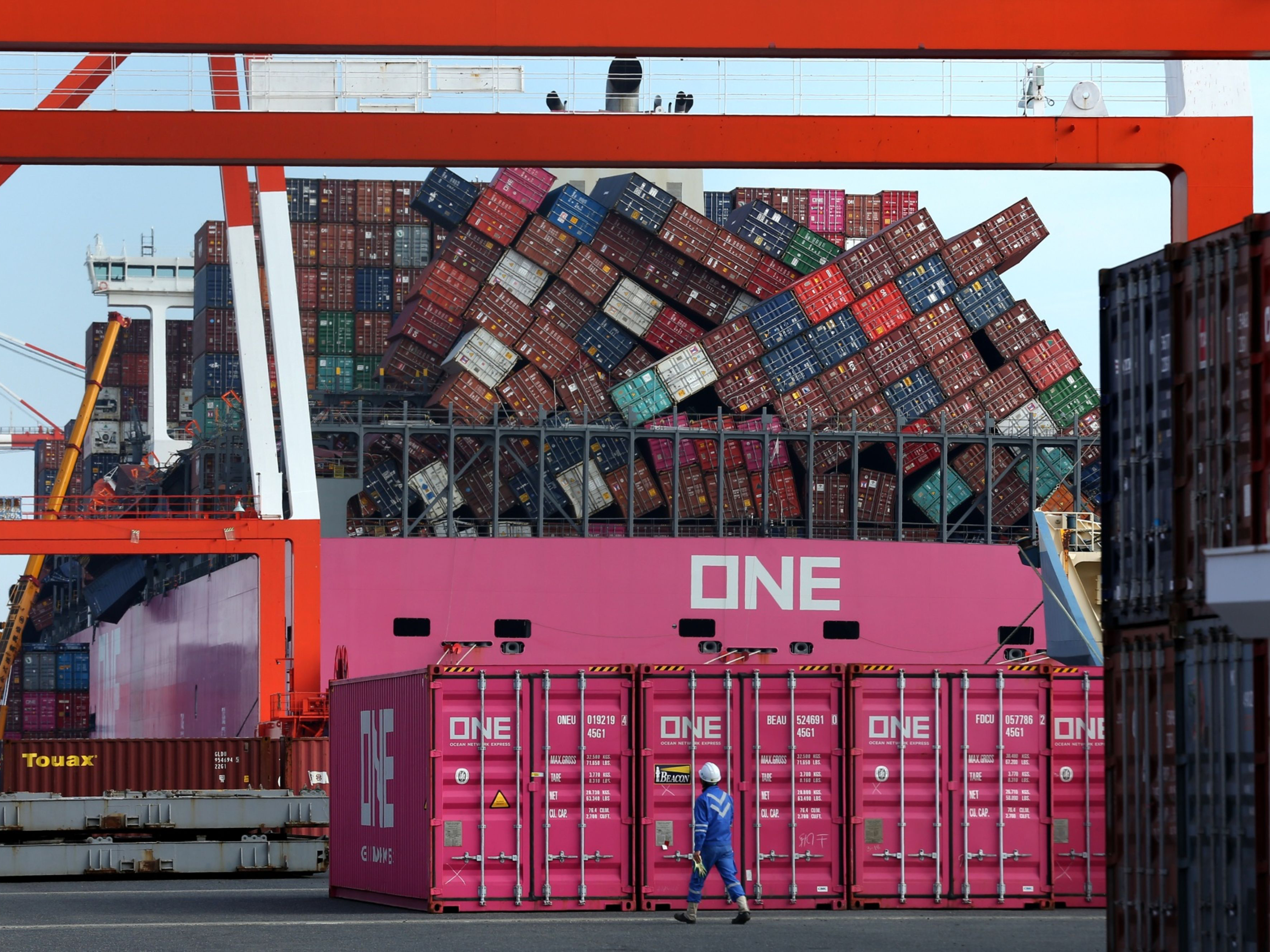
What’s causing the recent rash of container losses on cargo vessels?
The news has been full of stories about maritime accidents and containers toppling from ships into the sea. Ocean Network Express’s ONE Apus and ONE Aquila. Maersk Line’s Seroja Lima, Munich Maersk and Maersk Essen. Evergreen Line’s Ever Liberal. Even the latest and best-designed ships can’t seem to hold onto their cargo.
Traditionally, the industry might see losses on this scale once every year or two, says Joe Klobus, claims, insurance and legal manager of OEC Group, a freight forwarder doing extensive business in the trans-Pacific trade. But there have been more than half a dozen incidents since early November alone, far in excess of what the percentages would predict.
Heavy weather, as a manifestation of climate change, appears to be the prime culprit in the incidents. But natural phenomena are combining with a massive increase in imports traveling to the U.S. from Asia. Some of those ships might have been overloaded or containers improperly lashed, Klobus speculates, adding that it’s also possible that the biggest containerships on the water today — with capacity for more than 10,000 forty-foot containers — simply can’t handle rough weather.
Whatever the cause, the price tag for such an incident can run into the hundreds of millions of dollars, with carriers often denying responsibility, citing legal doctrines of “acts of God” and “perils of the sea.” As a result, worried cargo owners are taking a new look at cargo insurance, either upping their coverage or buying it for the first time.
In a business with origins dating back to the very beginnings of global commerce, one might expect importers and exporters to embrace maritime cargo insurance as an invaluable means of hedging against potentially devastating losses. (In less barbaric forms, one would hope, than a pound of flesh.) But Klobus says that form of protection is often overlooked as a result of complacency. “Some people are blindsided [by accidents],” he says, “with expectations that carriers will pay for the losses. But the law is heavily in the carriers’ favor.”
Such oversight might be coming to an end. Klobus has had numerous inquiries from customers about obtaining coverage. It can take many forms, from compensating for specific types of losses to all-risk insurance, the latter of which kicks in when carriers invoke their historical indemnities. It even covers random occurrences such as holes in containers or boxes dropped at the port. Further to be considered for protection are the high costs of lawsuits for cargo loss or damage, which Klobus says are becoming “more and more prevalent,” despite the advantage that carriers often carry into court.
Klobus urges prospective purchasers of cargo insurance to carefully examine what they need to protect themselves against, and what their policies actually cover. That’s especially important in the world of intermodal transportation, where many hands touch a container as it travels from origin to final destination. (Determining the precise point at which damage or loss occurred can be extremely difficult, notwithstanding the high-tech cargo-monitoring systems in use today.)
Cargo insurance isn’t all that expensive to obtain, Klobus notes, especially in relation to skyrocketing freight rates. Carriers are charging as much as $12,000 per container for cargo moving out of China to Europe and the U.S., and the high value of many consumer goods from Asia justifies an extra measure of protection. Some policies even protect shippers against the sudden imposition of higher tariffs, an increasingly common occurrence in recent years. “It’s a very small portion of the overall price to protect the overall investment,” Klobus says.
In the end, the growing awareness of the need for cargo insurance is just one aspect of a realization by shippers of the need for a comprehensive supply-chain risk-management strategy. Disaster can take many forms, and is often more serious in impact than the loss of a few containers. Entire regions of the world can be temporarily shut down by an earthquake, tsunami, flood, nuclear plant accident or global pandemic. Manufacturers and distributors that fail to disperse their sourcing or secure alternative suppliers in the event of disruption could face overwhelming losses. Fortunately, many are waking up to that possibility, ensuring that their hopes of recovering from disaster won’t sink like containers tumbling from the decks of a ship in a storm.







